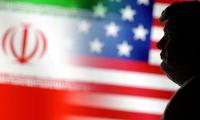Chinese official sources, the CPEC has to be developed in phases since it is a huge and complex project and the fact that the eastern route is being developed on a priority basis is a simple case of efficiency and expediency.
As for premature assertions and the mantra of ‘ignoring certain provinces or areas’, it is counterproductive to country’s prosperity because it is not responsible conduct to compromise the progress of such a gigantic project simply because of inter-party bickering particularly when such a project is going to pass through all the provinces, as already re-affirmed by none other than the Chinese authorities.
It is in this regard, yet another clarification has come from official circles including the PM Office, to reassure the people of Pakistan that no change has been made in the route. According to the same clarification, several routes and alignments have been identified, of which the one that could be immediately put into operation by using the existing infrastructure is being opened up first, in mutual consultation with the Chinese side. The good news for the KP and Balochistan in this context is that due to this big development, it will make a positive impact on the social fabric of these two provinces, when the project starts in the tribal, underdeveloped and poorly policed areas lying in the western part of the Indus Valley. It is also a chance for the government to reduce unemployment and deprivation of the Baloch and Pashtun people by laying the CPEC on a route that benefits Balochistan and KP.
China’s friendly role in this project is highly appreciable particularly in giving due recognition to this Pakistani plan. The fact is that Pakistan has been emphasising on significance and practicability of this project since 2002. China, however, had its own priorities and took some time in analysing it.
The new Chinese leadership, however, considered this Pakistani proposal practical as well as beneficial for its economic benefits. During the Pakistan visit of Chinese Premier Li Keqiang, the latter supported this Pakistani proposal and gave the go-ahead signal.
Even the recent visit of Prime Minister Nawaz Sharif to China was successful as both countries signed 19 agreements on mega projects relating to electricity generation. These projects include the 330 MW Thar coal-fired power plant, Suki-Kinari hydropower project, the 660 MW Muzaffargarh coal-fired power project, 660 MW coal-fired power project at Qadirabad, district Sahiwal, a 99 MW UEP power project and the 900 MW Quaid-i-Azam solar power station projects. The total investment coming from China amounts to $46 billion out of which more than $30 billion would be invested in energy projects.
This huge Chinese investment should not be simplistically perceived as some commercial deal. It is rather a gift of sincerity from China to the people of Pakistan. And it is in acknowledgement of proven sincerity of Chinese friends that PM Nawaz Sharif has declared relations with China as the cornerstone of Pakistan’s foreign Policy.
Report was picked up by CNBC, triggering rapid market rally
Trump threatened additional 50% tariffs after China retaliated for last week’s tariffs
Officers met additional chief secretary Punjab, in presence of senior departmental secretaries
ECC reviewed and approved several Technical Supplementary Grants for ongoing projects and initiatives
Secretary-General of , Dr Asad Majeed Khan, will arrive to attend Lahore meeting,” says FO
Project groundbreaking was carried out by CM Maryam and Army Chief General Asim Munir on 15-2-2025







